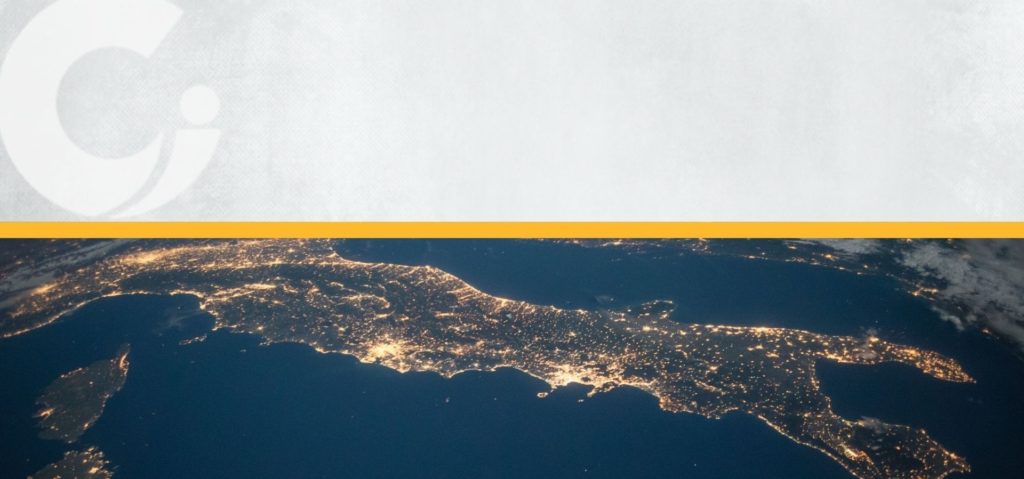Global Investor Roundtable: Cathay Innovation’s 2022 Predictions on What’s Next for VC & Startups Across the Globe

Januar 12, 2022
Afrika

In 2021, we saw the world settle in and adapt to a new post-pandemic reality. Amidst the largest mass vaccine campaign in history, with over 8B Covid-19 vaccinations administered globally, digitization continued to sweep across the world – transforming industries, society and the day-to-day lives of people everywhere. While it may seem like time has been at a stand still, there’s been impressive progress and massive shifts from digital health to the future of (hybrid) work and 5g, the electric vehicle boom, crypto’s takeover and of course web3.
It’s been quite a year for the tech industry with startups raising $643B in venture capital funding across the globe – a 92% increase compared to 2020’s $335B (according to Crunchbase data). There was also a record number of IPOs such as Robinhood, Coinbase, Uipath, JDLogistics, Affirm and of course Singapore’s Grab with the largest SPAC to date.
At Cathay Innovation, we saw our portfolio hit major milestones with many becoming billion dollar companies (e.g., Sidecar Health, ZenBusiness, Facily, Ledger, Tungee, etc.), hitting the public markets through SPACs (e.g., Wallbox and FinAccel) or taking innovation to the next level through transformational partnerships (e.g., Owkin & Sanofi) and M&A (e.g., Alkemics & Salsify, Glovo & Delivery Hero and Trifacta & Alteryx). We’ve also made important strides as a firm, publishing our first sustainability report and partnering with Seaya Ventures to expand into new regions like Latin America with a dedicated fund (the Seaya Cathay Latam Fund).
Now, as we embark on a new year the annual question remains – what’s next? As an investment firm that is truly global in nature, we asked our teams on the ground across regions – from North America and Latin America to Europe, Asia and Africa – what are the major trends in store for 2022?
Global Outlook: Venture Capital and Startups Prepare for the 2nd Phase of Digitization & Open Transformation
Denis Barrier, Co-Founder & CEO, predicts:
Startups Vs. Incumbents – From competition to collaboration
As digitization continues its exponential growth, we’ll see more and deeper collaboration between startups and corporations who are now moving towards completely symbiotic relationships. Rather than being seen as “disruptors” or competitors, corporate leaders are now seeing startups as key strategic partners in the path to digital transformation which will create more flexible and innovative business models, at scale, for both sides. This new phase – going from open innovation to open transformation – will lead to the biggest business opportunities of the future, creating more value for startups along with unique innovation and revenue-growth drivers for large organizations.
The 2nd Phase of Digitization – The rise of the creative empaths
During the 1st phase of digitization, and the explosion of data, organizations sought solutions to simplify and streamline tech stacks. Today, the 2nd phase has shifted focus to technologies that extract, leverage and put data to work to improve business productivity, processes and operations. In the coming year, this will be accelerated further with cloud, 5G and RPA becoming ubiquitous – fueling business transformation at high-speeds, fundamentally changing enterprise operations and automating simple, repetitive tasks in all roles from administration to data science. While the latter is largely feared due to job loss potential, I argue that it will shift the organizational mindset to prioritize creativity above all else. A new class of ‘creative empath’ business leaders will emerge to foster talent and new ideas within a workforce subject to life-long learning.
Europe: Sustainability, Digital Health, Crypto & All Things Decentralization

Europe’s sustainability mindset takes deeper roots in the startup & VC ecosystem
European VCs will pour even more time and capital into climate change and ESG efforts under a shared conviction that startups will be key in shifting to a more sustainable economy. As one of the most advanced VC ecosystems with a deeply rooted sustainability mindset, this will have a huge impact on how European startups operate and innovate. While other regions (e.g., the US) still largely separate traditional and impact-oriented investments, we’ll see the EU’s approach produce global leaders in sustainability innovation.
-Denis Barrier, Co-Founder & CEO
Jacky Abitbol, Managing Partner, predicts:
- Digital Health – This is just the beginning: 2022 will continue to see the rise of digital health, especially with the rise of telemedicine – improving health systems for patients, professionals, and creating new value for all stakeholders. Beyond the pandemic, which has triggered a strong realization around current inadequacies, countries around the world are facing a shortage of medical personnel over the mid to long term while treating an aging population. Digital health solutions will be essential in mitigating the supply and demand mismatch and decision-makers are now rising to the challenge and accelerating the pace of implementation. For example, the remote digital surveillance of chronic diseases (e.g., diabetes, cancer, etc.) is now increasingly being covered by social security and medical insurance.
Apart from health monitoring, digital tools are powering personalized solutions that can be applied to various fields – such as nutrition. This will have a real impact on the treatment of chronic diseases while encouraging a more general trend around healthy living. In the years ahead, the impact of digital technologies in the field of medicine will be felt and appreciated more and more broadly.
Jean Francois Cochy, Investment Director, predicts:
- European regulation to support the emergence of long-awaited environmental impact companies: With its Green Deal and its Sustainability Taxonomy, Europe is breaking ground into a new kind of investment universe which we expect other geographies to take after – sustainable investing. By providing both investments and a best-in-class regulatory framework, the European Union is encouraging all investors and economic actors around the world to act upon and to carry out the global transition toward a better, more sustainable future. Soon, all companies will have to report on their carbon footprint and environmental impact. This will create a massive need for monitoring and measuring solutions which new technologies such as satellite monitoring can help scale. As a consequence, consumers will pay closer attention to environmental impact information when making purchasing decisions.
- Europe’s startup ecosystem to see the great talent rotation: Fueled by the abundant funding environment over the past few years, many large tech companies have emerged in Europe – and with them, training and growing battalions of employees. As ESOP vesting schedules progress, we’ll see top talent leave scale-ups in pursuit of new companies or joining younger startups. On one side, this is an exciting prospect for the larger tech ecosystem – leading to a broader talent pool with experience in fast-scaling companies. On the other hand, it poses a major challenge for late-stage tech companies which will need to build new retention schemes and adapt management methods to avoid top talent bleeding. Finally, we’ll see that those who are best positioned to attract rotating talent will be purpose-driven companies with a strong positive impact – in health, energy, food, consumer goods, etc.
Vincent Sebag, Principal, predicts:
- 2022 will be a turning point for decentralized finance: Decentralized finance (DeFi) is one of the most promising investment trends in the years to come. All the building blocks of traditional finance are now becoming available digitally and in a decentralized way. The boom of stable digital currencies in the last 18 months will be a cornerstone for the rise of Web3– which need not depend on cryptocurrency volatility to generate revenue. In addition, investment tools and access to liquidity are increasingly accessible online: 2022 will see the boom of IDOs (Initial decentralized offerings), the equivalent of ICOs (Initial coin offerings) but leveraging decentralized exchanges. More complex financial instruments, particularly those that generate yield on investments, will also become more accessible – enabling users to earn passive income, in the current age of negative inflation rates, all done just in a few clicks
- Web3 to reshape the Internet: Innovative Web3 projects are starting to emerge that will completely revolutionize the web we know – all leveraging decentralized blockchain protocols. The open source nature of these projects will enforce transparent digital operations and bring greater levels of trust with any individual given the ability to act as checks and balances. This will prevent data monopolies and privacy abuse from big tech, give decision-making and revenue streams back to content creators, while moving away from the ad-based models of the GAFAMs. 2022 will see more general public participation through Decentralized Autonomous Organizations (DAOs) – the political organs of Web3 that enable any token holder to vote on the general direction of projects and new product developments.
- NFTs go beyond collectibles to transform digital ownership: Digital ownership will see massive transformation in 2022. The NFT boom we have seen in the last year for collectibles is only the premise of what is to come. NFTs bring the promise of revolutionizing the concepts of digital copyrights, intellectual property, software licence, physical asset proofs of ownership and many more.
US: The Future of Startups, Work, Fintech, Automation & Empathetic Tech…Beyond the Valley

Alexandre Lazarow, Partner, predicts:
- The international distribution of innovation evens the global playing field: In the past, conventional wisdom suggested entrepreneurs had to build startups in the US and then expand internationally. Today, innovation sandboxes are distributed internationally. In the future, we’ll see more and more of a diversity of ideas get tested, improved and scaled in markets around the world before entering the US.
- The future of tech will be more empathetic: Software may be eating the world, but it won’t replace empathy. Following the pandemic, in 2022, we will remember the importance of human connection, authenticity and relationships. The technologies of the future will need to deliver (or support) more human-like experiences to end users. From AI that mimics behavior or solutions that power real togetherness – making it easier, more accessible and seamless – what will sell is human connection.
- Startups to see a broader set of financing options from a wider set of players – beyond VC: Historically, startups had two financing options: venture capital or debt. In the future, emerging companies will have a broader range of options at their disposal from a wider set of players beyond Venture Capital or banks, from revenue based financing, to web3 enabled community support.
- Embedded fintech shifts financial services from product to (any) product feature: The future of financial services won’t be in a bank. It will be everywhere. Embedded financial services offer both a distribution advantage by offering services at unique points of consumption as well as a data advantage by knowing, customizing and serving customers better. We’ll see more and more trusted brands embed – making financial services more of a product feature rather than a discrete financial product.
Simon Wu, Investment Director, predicts:
- Commerce 2022 – As privacy changes make customer acquisition harder, brands to laser focus tech spend on optimization, subscriptions & retention: Acquiring new customers is getting harder as new privacy restrictions and platform’s data reforms (e.g., Apple & Facebook) take effect. To keep customers engaged and active, more brands will set their 2022 focus on building post purchase or loyalty programs that reduce churn and create additional customer lifetime value. In addition, investing in an improved data stack to optimize the backend and support data-driven/targeted marketing will be all the more necessary to manage spend.
- The rest of the financial sector will have its digital transformation moment: Community banks and credit unions, which have not historically kept up with the pace of innovation of larger incumbents or rising fintech startups, will have their digital transformation moment and finally provide parity to that of well-established FinTech companies offering automation and digital first workflows that improve customer NPS.
- Vertical software meets fintech, up next – healthcare: Fintech has disrupted the business models of many verticals, and healthcare will be no exception. With healthcare costs and income inequality at all-time highs, digital health startups will have to take a page out of the fintech playbook in order to create new business models that drive better access to services such as leveraging payments and lending/ bnpl monetization.
- FinTech becomes the new SaaS with 80-90% gross margin business: The predictability of certain sectors like SaaS and eCommerce has led to an extremely competitive market with limited white space – thus not as many attractive investment opportunities for investors. But as more and more capital is invested into fintech, with rising adoption levels for both businesses and consumers, most startups in this space will also start to see 80-90% gross margins – which was commonly associated with SaaS companies.
Jason Chen, Associate, predicts:
- As adoption increases, emerging automation platforms to go beyond processes to general workflows: In the last year, automation became more commonplace with enterprises focusing on individual pieces like process discovery and automation or the analysis of unstructured data. But as adoption increases, thanks to modernized data stacks, we’ll see a new wave of intelligent automation platforms emerge to tackle not just processes, but general workflows – bringing greater efficiencies and decision-making capabilities to the world’s brands and organizations.
Brian Schwarzbach, Associate, predicts:
- Welcome to the Future of (3D) Work: Today’s tech titans (Microsoft, Google and Facebook – now Meta) will accelerate their investment into productivity-oriented, enterprise 3D experiences, as they compete to win the true “future of work” in a world transitioning to more flexible and distributed work models. Though it won’t happen overnight, the broad investment into creating enterprise-grade 3D tooling will have a trickle down effect that aids in the adoption of 3D consumer use cases.
- Climate change becomes a boardroom priority in the US: We’ve reached a critical global inflection point where government and corporate climate impact strategies are no longer a “nice to have” but a “need to have” – becoming a top-three agenda item at the board level. We’ll see enterprises dedicate more time and money on climate-related tech, services and carbon offsets in a bid to operate cleaner and more efficiently. External pressures from the rising consumer spending power of Gen Z and Millennials, wanting to buy from value-aligned companies, will be a key driver of this shift in the US.
Asia: Tech in China and Southeast Asia Gains Global Prominence

B2B tech in China to find success across borders
While the US will keep its stronghold on new innovation in deep tech, China will be neck and neck in areas like data mining and AI both locally and globally. Specifically, Chinese B2B companies – mirroring the success of their B2C counterparts such as Alibaba and Tencent – will increasingly find success abroad thanks to AI and supply chain advantages. When the frontiers re-open, what will become more visible is how rapidly the Chinese B2B economy has accelerated its pace of digitisation in the last two years.
-Denis Barrier, Co-Founder & CEO
Rajive Keshup, Investment Director, predicts:
- Companies born in SEA, will take off in the USA: The proliferation of a number of business models born in the East (Asia or SEA), like new online streaming shopping, superapps and mini-programs, will start to take off in the West (arguably with better marketing!)
- Regulation will be front and center in Southeast Asia: In 2022, regulators will be very active across the region. This will present a key challenge for most companies, especially for those in FinTech and privacy, navigating regulation within the current construct of startup business models.
- The rise of conscientious founders: Founders will not only care about which venture capital firms they take money from, but also who the LPs are behind the VCs and what they stand for. Venture capitalists will need to increase disclosure or risk losing out on deals.
- Low-Code, No-Code will Drive Acceleration in AI: Automation will see a significant rise and Low-Code No-Code will help companies and countries create massive leapfrog opportunities. AI and associated logic data will be embedded everywhere.
- The Metaverse is coming: The Metaverse will get closer, but still not ubiquitous until infrastructure for the middle and bottom layers of the pyramid catches up.
Emerging Markets: SEA, Africa, Latam, India Develop Tech with High Impact

The Golden Age of Emerging Regions – SEA, Africa, Latam and now India
Venture capital funding will only accelerate for startup ecosystems beyond North America and Europe. As technology scales (e.g., Grab’s recent public listing) and brings massive upgrades to populations from SEA to Africa and Latam, the startup phenomenon will be critical in building the XXI century for emerging regions, creating their own digital infrastructure and mobile playbook. We’ll see India emerge as one of the hottest new markets as it becomes more open thanks to its large pool of engineering talent (producing quality tech) and growth potential similar to the likes of what we saw in China, while SEA, Africa and Latam continue to mature.
–Denis Barrier, Co-Founder & CEO
Fintechs to expand across product lines to increase impact & transform emerging markets
Fintech in the US can be additive. In emerging markets it can be transformative. In markets with much higher rates of underbanked customers, fintech innovation doesn’t just offer a more convenient user experience, it offers the only user experience. Innovators who can reach customers affordably, and offer a low-cost digital experience, like buy-now-pay-later or neobanks are set to deepen their customer relationships across multiple product lines (e.g., credit, savings, investments, payments and insurance) to increase their impact.
-Alexandre Lazarow, Partner
Parting thoughts from the Cathay team
Looking towards 2022, we remain committed to working with innovators everywhere – connecting entrepreneurs, investors to executives at the world’s largest corporations. Together, we can make some of these predictions a reality – fueling digitization and innovation (at scale) that can positively transform industries, society and the day-to-day lives of people across the globe.